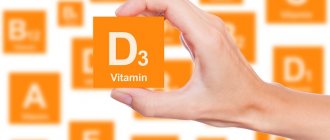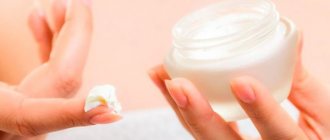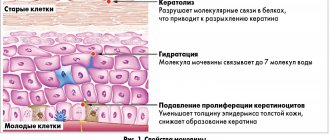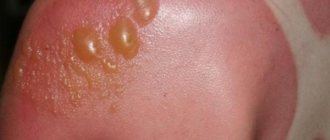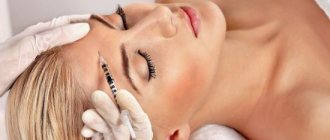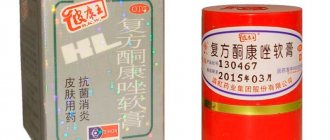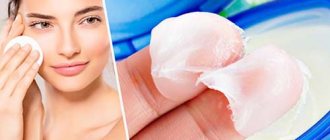From this article you will learn:
- Why is it so important to restore the lipid layer of the skin?
- After what procedures is it necessary to restore the lipid layer of the skin?
- What to do to restore the lipid layer of facial skin
- How to restore the lipid layer of the skin with oil
- What creams are there to restore the lipid layer of facial skin?
- What salon procedures to visit to restore the lipid layer of facial skin
Our skin requires reliable protection from viruses, bacteria, dehydration and many other factors that have a negative impact on it. Everyone knows that the protective function in this case is assigned to the lipid layer. When it is violated, the skin turns pale and appears neglected. In addition, wrinkles appear on it, and the person visually looks older than he really is. We will discuss in this article whether there are methods aimed at restoring the lipid layer.
Why is it so important to restore the lipid layer of the skin?
Human skin is a very complex and “wise” organ. The lowest layer is the hypodermis, consisting of adipose tissue that accumulates and retains water contained in body tissues. The next layer closer to the surface is the dermis, which has special cells that absorb moisture from the hypodermis like a sponge, and this water freely flows further upward, into the epidermis, all the way to the stratum corneum. It is the stratum corneum (corneocytes linked by fatty lipids) that is the outermost layer and at the same time a lipid barrier for the subsequent release of moisture to the outside, that is, its disappearance.
It turns out that if the lipid “cement” is injured, becomes thinner or even eliminated (for example, due to the effect of alkali in the form of soap on the skin), moisture, which is an integral part of healthy, elastic and radiant skin, evaporates through the loose scales of the stratum corneum.
As a result, the following visible problems on the face arise:
- looseness;
- loss of skin elasticity;
- desquamation;
- obvious dehydration of the skin;
- dryness of the stratum corneum;
- small wrinkles.
In addition, through the injured lipid layer, various bacteria, toxins, etc. can enter the skin, which cause irritations such as:
- eczema;
- dermatitis;
- blackheads
The composition of the lipid layer includes free fatty acids (mostly oleic and linoleic), ceramides (content in the skin up to 50%) and cholesterol. There are various reasons that can “break through” this “cement”.
Unleash your inner beauty with Japmagic!
Japan has long been famous for its reverence for beauty.
The culture of this people is based on the recognition of naturalness, naturalness and harmony in one plexus. Beauty is where everything is laconic and combined with each other. Refusal of pretentiousness, vulgarity, excesses, only the necessary, simple and aesthetic - these are the preferences of modern Japanese culture. This principle can be seen in the cosmetics industry. Japanese cosmetics are distinguished by high quality, excellent properties and the absence of cheap fragrances and harmful components.
Thanks to their natural composition, Japanese cosmetics have become popular all over the world! High quality, cost-effectiveness, hypoallergenicity, efficiency - these are the hallmarks of Japanese-made cosmetic products.
After what procedures is it necessary to restore the lipid layer of the skin?
The effects of ultraviolet radiation, radiation and other negative environmental factors can lead to the formation of free radicals in the skin, as well as lipid peroxidation.
Causes of lipid layer disorders:
- Using low-quality soap or products for washing, or washing with hot water.
- Abuse of sunbathing and solarium.
- Temperature changes (for example, frequent transition from a frosty street to a very warm room).
- Physiological stress (excessively drying the face with a towel after washing can disrupt the process of lipid formation).
Composition of moisturizer
There are 4 types of ingredients in the cream that support a healthy level of skin hydration:
A competent moisturizer should contain all 4 types.
Many components combine several properties - for example, a humectant and a film former.
Let's talk about each type in more detail.
Humidifiers
Humidifiers are always highly absorbent substances. They are able to attract water from the atmosphere into the skin, as well as “drag” it from the lower layer of the skin (dermis) to the upper layer (epidermis). Humectants add moisture to the skin, bind it and keep it inside.
Many of them also form a thin gas-permeable film. This way the skin breathes, but the moisture does not escape. Such moisturizers (for example, hyaluronic acid) work like a “wet compress” - they “sit” on the surface of the skin, absorb and retain moisture.
In addition, moisturizers increase the plasticity of corneocytes (cells of our upper stratum corneum) and reduce skin roughness.
Humidifiers work especially effectively in humid climates and after a shower, when there is a lot of moisture on and around the skin.
The effective concentration of moisturizers in skin products is from 1 to 5% (for hair - from 2 to 5%).
Cheat sheet on humidifiers. What to look for on the label
- NMF (natural moisturizing factor) - hyaluronic acid (hylauronic acid), glycerin (glycerin, glycerol, diglycerin), urea (urea), amino acids (amino acids, arginine PCA, sodium aspartate, sodium polyaspartate).
If your cream contains components of the skin's natural moisturizing factor, consider yourself lucky. ☺ The components of NUF have a small molecule and are highly soluble in water. From cosmetics, they penetrate well into the stratum corneum and effectively moisturize, supporting natural processes.
Acids and their derivatives - lactic acid, sodium lactate, ammonium lactate, TEA-lactate, lactamide, malic acid, sodium malate ( sodium malate), diglycereth-7 malate, pyrrolidone carboxylic acid (PCA), sodium pyrrolidone carbonate (sodium PCA), copper pyrrolidone carbonate (copper PCA), glucuronic acid (polyglucuronic acid) ), acetic acid amide (acetamide MEA), glutamic acid (glutamic acid).
Sugars, polysaccharides - erythritol (erythritol), glucose (glucose), xylose (xylose), maltitol (maltitol), melibiose (melibiose), invert sugar (saccharide isomerate, saccharide hydrolysate), agarose (agarose).
Pantolactone, glucuronolactone, corn glycerides, sorbitol, hydroxyethyl sorbitol, algae, seaweed, carrageen, sea salt, honey, panthenol , hydrolyzed oat, wheat, soy, corn, silk protein, hydrolyzed wheat starch, collagen, elastin, gelatin, betaine, glycereth-12, triglycereth-7 citrate.
Film formers
Film formers help retain moisture inside. Therefore, they are always combined with moisturizers in the cream.
Film formers create a thin, moisture-proof film on the skin. It prevents evaporation and “locks” existing moisture.
By the way! They are also called occlusal components.
Occlusive components reduce irritation, give the impression of elasticity and freshness, and help restore the hydrolipid mantle.
However, some of them (for example, mineral oil, petrolatum) can leave a greasy feeling on the skin, clog pores and cause allergies.
The most effective film formers are petroleum jelly in a concentration of 5%, lanolin, mineral oil and silicones. That's why they are so often found in products for dry, atopic skin.
What to do to restore the lipid layer of facial skin
Cleansing
Restoring the lipid layer must begin with washing. Read in detail the characteristics of your cleanser; perhaps it is the main reason for the destruction of the stratum corneum. All cosmetics that come into contact with the skin should act very gently on the epidermis.
To reduce the likelihood of irritation, it is recommended to wash your face with a cleanser no more than twice a day, since the action of the active substances included in its composition, even if they are very gentle, is aimed at removing skin impurities and does not distinguish between used and protective oils or sweat and skin moisture. The cleansing preparation should come into contact with the lipid layer of the face for a very short time, then it must be washed off without leaving any traces.
Today, water in cities is a big problem. It often contains substances that have a negative effect on injured skin. Consequently, during the peak of sensitivity and irritability of the epidermis, it will be better to wash with specialized purchased water or floral water obtained by steam distillation from fragrant herbs and flowers.
Skin nutrition
To ensure restoration of the lipid layer, it needs to be “patched” with something. For this purpose, lipid particles are used both in the form of pure oils and in combination with other components in cosmetics. Lipid molecules pass into the intercellular spaces and are embedded in the lipid barrier. The fat particles applied on top move smoothly, reaching the living layers of the skin, and join the cellular metabolism. They may also be the basis for future lipid synthesis, which is characteristic of the stratum corneum of the skin.
Very often, to provide cells with “building material” and restore their functioning, various oils are used that contain essential fatty acids (linoleic and gamma-linolenic).
Skin hydration
Restoring the epidermal layer is one of the options for moisturizing dry skin. This method is very slow and takes time. Restoration of the lipid layer is the limitation of moisture evaporation through the stratum corneum. You can do it differently: moisten the stratum corneum directly or cover it with a damp film. There is another option for restoring the skin: increasing blood flow in the vessels of the dermis and, as a result, increasing the flow of moisture into the epidermis.
These three stages are necessary to restore the lipid layer of the skin.
Today, moisturizing components are becoming increasingly popular - natural substances that form a film filled with moisture on the skin. These products include hyaluronic acid, chitosan, β-glucan from baker's yeast, protein hydrolysates (collagen or wheat protein). It is not recommended to use Vaseline and other heavy oils to moisturize and restore the lipid layer of the skin, as they form a waterproof film on the skin, which also does not allow air to pass through.
Quality and efficiency at an affordable price!
Every year the need for high-quality and “working” cosmetics increases. The market is filled to capacity with products that cost pennies but do not benefit consumers. There are frequent cases when, due to low-quality raw materials, a person gets severe allergies or injures the skin.
To avoid becoming a victim of unscrupulous manufacturers, Japmagic recommends purchasing high-quality cosmetics that have passed laboratory tests and have quality certificates. All brands presented on our website fully comply with government standards and are safe for use!
Affordable prices, excellent service, favorable terms of cooperation - treat yourself with Japmagic! A retail store was opened at the address: Moscow, Andropova Ave., 22, NORA shopping center.
Restoring the lipid layer of the skin with oil
Borage oil
Borage seeds contain up to 33% oil rich in gamma-linolenic acid (GLA). As a result, this product has unique restorative properties. It is necessary to use it for dry and aging skin, and also as a dietary supplement that strengthens the structure of the skin and hair.
Evening primrose oil
“Evening primrose” is the English translation of the name of the plant whose flowers bloom just before sunset. Evening primrose seeds are rich in 65 to 80% linoleic acid and 8 to 14% gamma-linolenic acid. The oil has high restorative properties, therefore it is very effective in the treatment of skin diseases (used both externally and as a dietary supplement). Activates nail growth and is used as a softening and moisturizing component in cosmetics.
Black currant oil
Blackcurrant oil is famous for its high content of linoleic and gamma-linolenic acids in an ideal 1:1 ratio. The amount of GLA in the dermal layer affects the integrity of the epidermal barrier and the ability of the lipid layer to retain moisture. This oil is part of therapeutic and preventive preparations, helping to restore the appearance of dry and aging skin. This remedy is a necessary component of anti-aging therapy.
Rosehip oil
Rosehip oil is quite oily in its properties. It is extracted from the seeds of wild roses (bush climbing roses). For medical purposes it is used to treat cuts and more quickly restore injured tissue. The high content of linoleic acid determines the antiseptic properties of the oil. Included in body care products intended for normal, dry and damaged skin; Helps restore weakened, thinning hair. Accelerates the healing of minor wounds and scratches.
Macadamia oil
Macadamia oil contains a large amount of triglycerols, stearic (about 60%) and palmitic (21%) acids, as well as vitamins B and PP. Maintains the water balance of the skin, easily penetrates its upper layers, making it soft and moisturized.
Soybean oil
The high content of sitosterol, tocopherols and essential fatty acids gives this oil the following characteristics: it has obvious regenerating properties, ensures the restoration of the epidermal lipid barrier and increases the ability of the lipid layer of the skin to retain moisture.
Cacao butter
This oil contains stearic, palmitic, oleic and linolenic acids. It has a healing and soothing effect, recommended for use for dry, sensitive, delicate skin. All of the above oils help very well in restoring the lipid layer.
The procedure for removing makeup and cleansing the skin of the face, which must be followed when choosing a specific oil for this procedure:
- Apply a few drops of oil to your face and neck.
- Rub the skin with light circular movements along the massage lines for two to three minutes.
- Soak a towel in warm water. The water should not be too hot, but much warmer than for daily washing. Wring out the towel firmly and place it on your face and neck.
- Hold the compress on your face for 10 seconds, and then carefully wipe the skin with a warm towel along the massage lines.
- Rinse the towel, then wet it again with hot water and repeat the procedure again. Continue these steps until all traces of oil are removed from the skin. Typically it takes three to four times.
- After completing all cleansing procedures, you can rinse your face with cool water.
Secrets of moisturizing different skin types
When choosing products for dehydrated skin, you need to take into account many factors - the cause of dehydration, age, and the severity of cosmetic problems. The effectiveness of the procedures depends on the regular use of caring cosmetics.
Dry
To combat skin dehydration, temporarily avoid exfoliating products. They injure the epidermis and thin the hydrolipid mantle. To fix the problem, you need to:
- Avoid alkaline tonics and lotions. When dehydrated, the pH of the skin shifts to the alkaline side. To normalize the balance, cosmetics with alkali are replaced with lotions with a neutral pH level.
- Take steam baths for the face once every 3 days. Hot steam stimulates the expansion of pores and the functioning of the sebaceous glands. To steam, you need to hold your face over the steam for 3-5 minutes. As a liquid, use decoctions of thyme, nettle, chamomile, oregano, and sage.
- Refresh your face with a spray based on thermal water. The procedure is recommended to be carried out in summer on hot days. Regular hydration prevents dehydration.
If you take care of your face regularly, the protective layer of the epidermis will be restored. This will reduce the skin's sensitivity to external irritants.
Fat
To restore oily skin you need:
- Use serums with hygroscopic hydrants once every 2 days;
- wash with cold boiled water;
- Apply water-based moisturizers morning and evening;
- take vitamin-mineral complexes with B vitamins.
During treatment, you must completely abstain from wearing decorative cosmetics and drinking alcohol.
Combined
The following will help restore the elasticity and youthfulness of your facial skin:
- Moisturizing compresses. Every day before bed for 15-20 minutes. Gauze soaked in glycerin or linseed oil is applied to the face.
- Film-forming creams. Peeling areas on the face are treated with baby cream to which aloe juice, honey or glycerin are added.
- Applications of medicinal herbs. Chamomile, parsley or thyme are chosen as the base component. 5-7 tbsp. l. Boil the herbs in water for 10 minutes. The lightly squeezed herb is wrapped in gauze and applied to the face for half an hour.
The regularity of procedures depends on the degree of dehydration. If necessary, compresses and applications are made every other day for 2 weeks.
TOP 3 creams for restoring the lipid layer
- A nnemarie Borlind is a fluid with ceramides.
This cream has a light texture and is suitable for all skin types. You can use it as a serum. It has practically no calming properties; the main emphasis is on strengthening and restoration.
Approximate cost: from 3500 rub.
- D ado Sens – soothing emergency cream.
The composition contains soothing and healing components such as allantoin, panthenol, licorice extract, magnesium, bisabolol, black currant oil, ceramides-3, ceramides-6, yeast extract for problem skin.
Cost: from 1000 rub.
- D ado Sens is an anti-aging fluid cream with ectoine.
Shiseido, WASO night revitalizing mask
The WASO product line was created in accordance with nature - that is, all cosmetic components are natural and are designed to support the natural functions of the skin. The mask contains yuzu seed extract, which stimulates the synthesis of hyaluronic acid, phytoplankton extract to restore skin, and many more herbal ingredients - ginseng, carrot root and safflower oil.
About the face Ceramides in cosmetics: how substances suitable for any skin type work
Salon procedures to restore the lipid layer of facial skin
Glycolic peeling
Glycolic peeling is a superficial chemical peel using glycolic acid as a base. Its advantage is that it is effective for all skin types and has no age restrictions (except for children under 15 years of age). It has been proven that glycolic acid, having a low molecular weight, very easily penetrates the upper layers of the skin and effectively moisturizes it.
In addition to a fairly accurate but enhanced softening of the dead layer, glycolic peeling exhibits an antioxidant effect and activates the production of collagen and elastin. As a result, the skin becomes smoother, it is restored, and the color is evened out.
The procedure begins with the cosmetologist applying a weak solution of glycolic acid to the face, which softens and degreases the desired area. Next, the glycolic gel itself is uniformly distributed: it is kept on the skin for literally a few minutes, after which it is removed with a neutralizing solution. Finally, a moisturizing or nourishing mask is made with a toning effect: the skin, freed from dead cells, can finally absorb the active ingredients of the mask.
Professionals advise carrying out glycolic peeling in courses consisting of 4–10 sessions, following the indications. Restrictions on the procedure: the presence of injuries and formations on the skin, pregnancy, hormonal therapy, etc. In addition, after the session it is forbidden to be in the sun. If you are still not ready for redness and flaking of the skin after peeling, there are less drastic ways to restore the lipid layer, for example, courses of masks with glycolic acid.
Biorevitalization with hyaluronic acid
Most care products applied in the form of creams or masks do not penetrate to the depth where their action is necessary, so they can give the skin freshness, but are unlikely to restore the lipid layer and guarantee long-term results. Sometimes, for a visible effect, cosmetologists advise resorting to injection methods, in particular biorevitalization.
This is a fairly new version of mesotherapy, which came to cosmetology from alternative medicine. The difference from the classical procedure is that high concentration hyaluronic acid of non-animal origin is used for biorevitalization. This product is designed to activate blood circulation in the layers of the skin, enhance the production of collagen and elastin. As a result, the skin becomes more elastic, tightness and dryness are reduced, small wrinkles are leveled out and the lipid layer is restored.
Like any serious procedure, biorevitalization has a number of contraindications - from breastfeeding to acute respiratory infections. Some scientists doubt the effectiveness of the method, but patients confirm its effectiveness by ordering a course not only for the face, but also for the neck, décolleté and even hands. Typically the course consists of four sessions. There is also non-injection biorevitalization, which involves treating the skin with an infrared athermal laser using a specialized gel.
Nowadays, you no longer have to spend a lot of time taking care of your skin or perform complex and unpleasant procedures at home. It is much easier to seek help from real professionals - the Veronika Herba beauty and health center, equipped with effective and modern equipment.
Why clients choose Veronika Herba Beauty and Health Center:
- This is a beauty center where you can take care of yourself at a reasonable cost, while your face and/or body will be treated not by an ordinary cosmetologist, but by one of the best dermatologists in Moscow. This is a completely different, higher level of service!
- You can receive qualified help at any time convenient for you. The beauty center is open from 9:00 to 21:00, seven days a week. The main thing is to agree with your doctor in advance on the date and time of your appointment.
Sign up for a consultation with a specialist by phone 8 (495) 995-15-13
, and you will see for yourself!
Clarins, SOS Hydra mask
The name of the product speaks for itself - the word “SOS” almost always promises a quick effect in the most difficult situations. In the case of Clarins, it is stated that the mask will moisturize even hopelessly dehydrated skin in 10 minutes with the help of Kalanchoe, a succulent plant (like aloe). Kalanchoe leaves remain green even in the hottest temperatures and during drought thanks to molecules designed to retain water. Once on human skin, they help it stimulate the production of hyaluronic acid.
Signs of dry skin.
- There is no excessive secretion of sebum.
- Small, narrowed pores. At a young age, the skin may be smooth with a matte surface.
- Thin, “luminous”. Glowing in both a bad and a good way. In good condition, matte and smooth. In bad conditions, the skin is so thin that capillaries appear through it. Has a tendency to rosacea.
- Not prone to breakouts, unlike the oily type.
- Relatively high sensitivity, which means its companions are not pimples, but redness, peeling, and a feeling of tightness.
- Those with dry skin have reduced turgor. This type is prone to early formation of wrinkles. Unfortunately, the signs of aging appear first in the dry type.
Dry skin in youth does not cause much trouble, has an even tone, and, as a rule, pleases its owner. But with age, irritation, flaking, redness appear, and early wrinkles complement the disappointing picture. As a rule, age-related changes manifest themselves in the fine-wrinkled type of aging.
How to choose a nourishing cream
Which nourishing face cream is best is up to your skin to decide. In other words, you should choose it based on her needs, and not for some speculative reasons. Until recently, nourishing creams had a thick, rich texture. But today, increased fat content is an optional condition. Modern technologies make it possible to include oils and lipids in lightweight formulas.
When choosing a nourishing cream, analyze the needs of your skin.
When making a choice in the store, remember that the nourishing cream should be different for different times of day and different seasons.
Nourishing creams and balms
Suitable for dry to very dry sensitive skin. Relevant in winter and autumn, they protect from wind and cold. Can be used as night care to restore and provide quality rest to normal skin. Suitable for massage.
Nutrient emulsions and light fluids
More versatile, these products nourish and protect normal, reactive, combination and oily dehydrated skin. Ideal for the warm season. Can be used as a day nourishing face cream or night cream, depending on skin type.
